SUMMARY
This is AI generated summarization, which may have errors. For context, always refer to the full article.
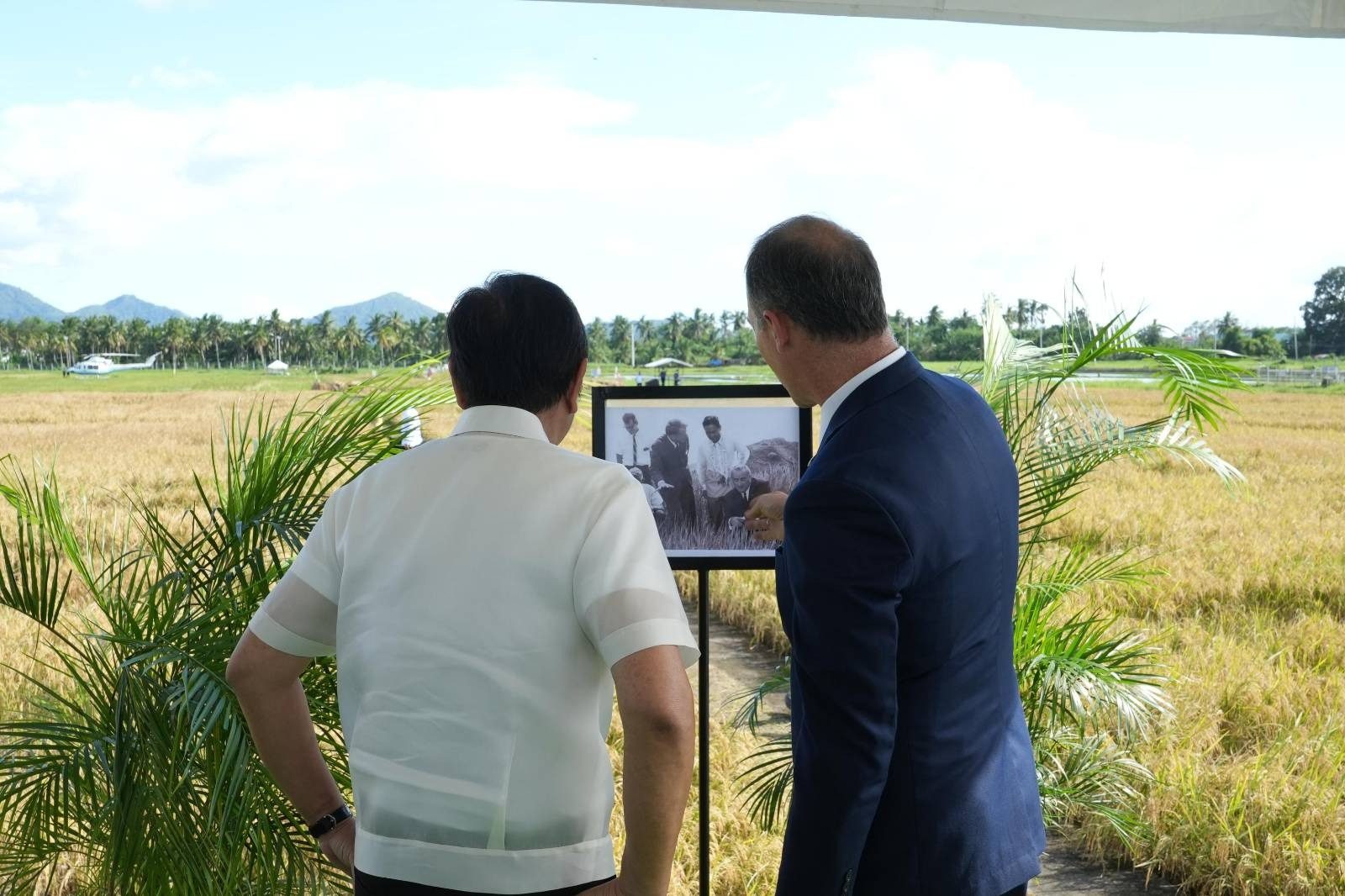
Following a visit which, in his own words, showed the value of research and information-sharing, President Ferdinand Marcos Jr. did not just go home with new information. Instead, he returned with a cheeky photo – a recreation of a picture of his father taken decades back when the dictator was in power.
A photo op was one of the sideline highlights of Marcos’ visit to the International Rice Research Institute (IRRI) headquarters in Los Baños, Laguna on Tuesday, November 29.
Marcos Jr., in his usual shirt jack barong, posed alongside officials of the IRRI to recreate a 1966 photo of his father with officials of the IRRI at the time, along with then-US president Lyndon Johnson.
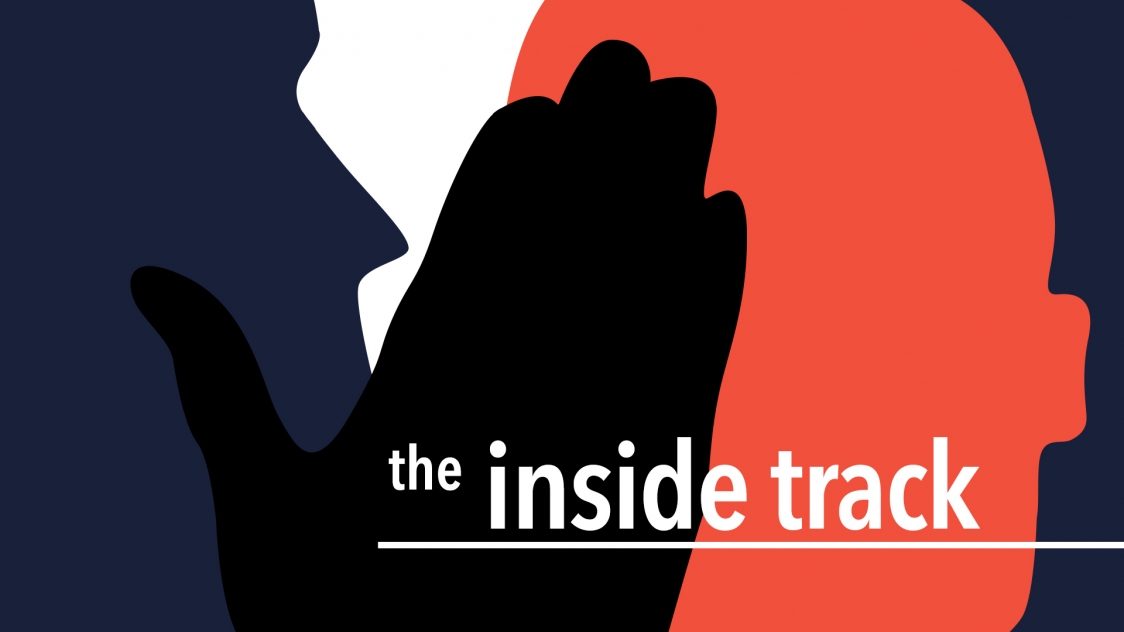
The gentlemen even took pains to recreate the attire of the men surrounding the former president Marcos – IRRI Director General Jean Balié and Alvin Poncin wore suits under the hot November sun (Marcos arrived in Los Baños just after noon) while IRRI’s Virender Kumar and Stephen Klassen wore white long-sleeved shirts with neckties. Klassen and Poncin even sat close to the ground – just like former IRRI officials Johnson and Hank Beachell did years back.
“Mula noon hanggang ngayon, agrikultura ang susi natin para sa isang bansang masagana (From then until now, agriculture is key to a productive country),” said a post on Marcos’ official Instagram account.
The original photo, taken in 1966, happened during Johnson’s visit to the IRRI.
The IRRI, in a 2016 article recalling the event, said: Johnson “[braved the mud]” and “went out into a rice plot to inspect the variety that was making so much of a stir in the media.”
Both Marcos and then-IRRI director general Robert Chandler Jr. briefed the US president. “[Johnson] then came up out of the field and, under a hot blazing sun just before 1 pm, he delivered an inspiring speech to the awaiting crowd of IRRI staff members and other visitors,” read the IRRI’s account of the event, 50 years later.
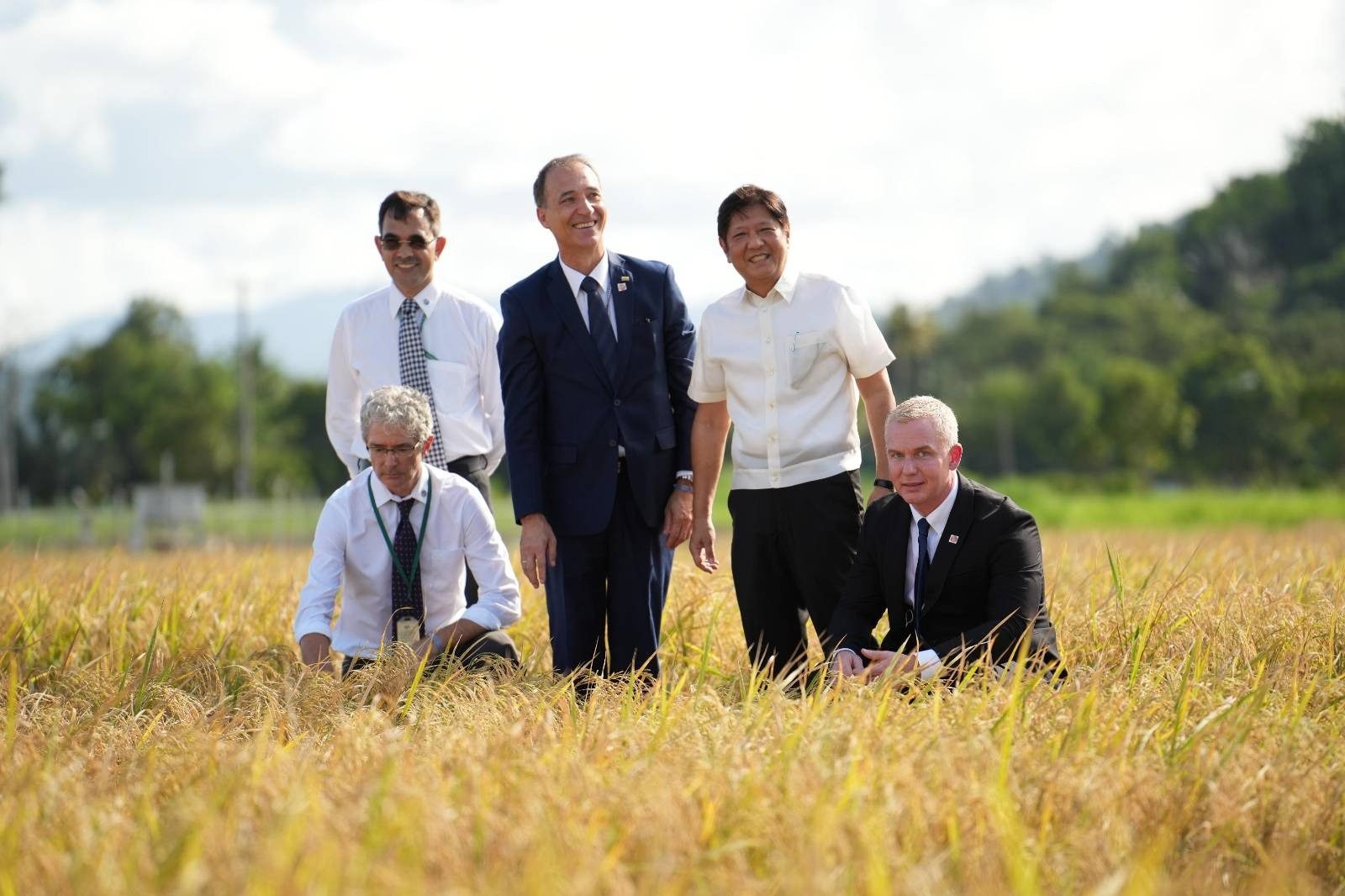
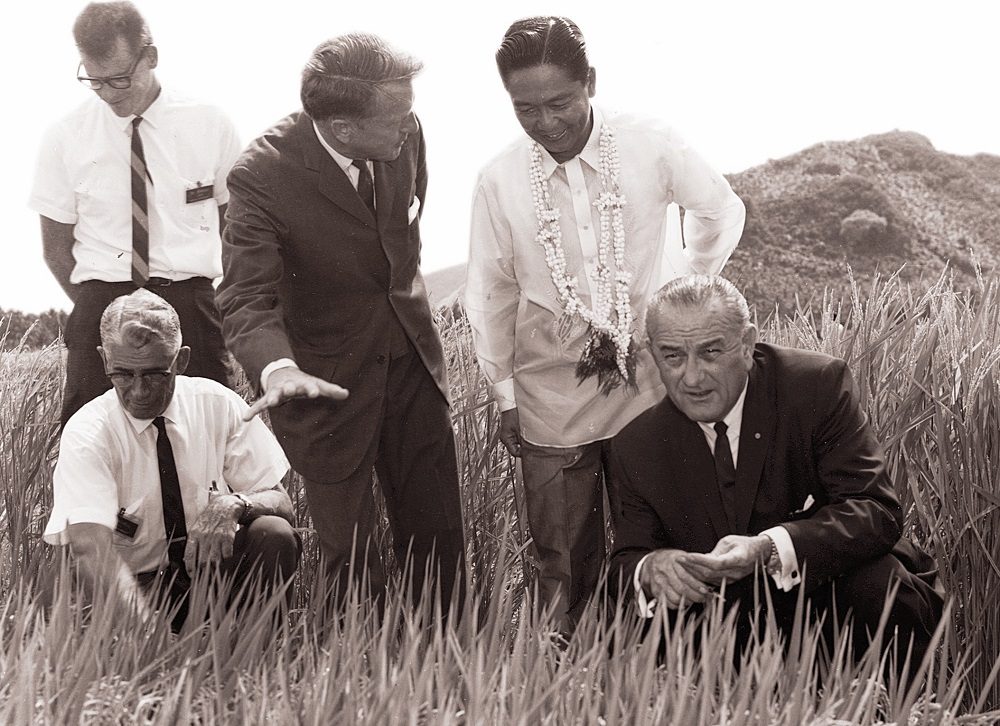
During the Tuesday visit, Marcos Jr. was briefed on the IRRI’s projects and initiatives, including direct rice seeding, a laser-guided system to redistribute soil over a cultivation area, the low-cost “solar bubble dryer,” and the IRRI’s seed storage system.
The IRRI is an independent, nonprofit, research and educational institute considered “the world’s premier research organization.” It was founded in 1960 by the Ford and Rockefeller foundations (with support from the Philippine government) – and yet President Marcos had claimed in the past that it was his father who founded the institution. (Rappler has fact-checked this false claim here).
The elder Marcos assumed his term as 10th president of the Philippines in 1965 yet – and he stayed in power for over two decades. It was only a year before he was ousted in the People Power Revolution of 1986 that the Philippines would establish the Philippine Rice Research Institute in 1985. Marcos Jr. made the claim in a September 2021 vlog to commemorate the late dictator’s 104th birthday.
One of the words Marcos Jr. used in his Instagram post – “masagana” – also harkens back to the time of his father.
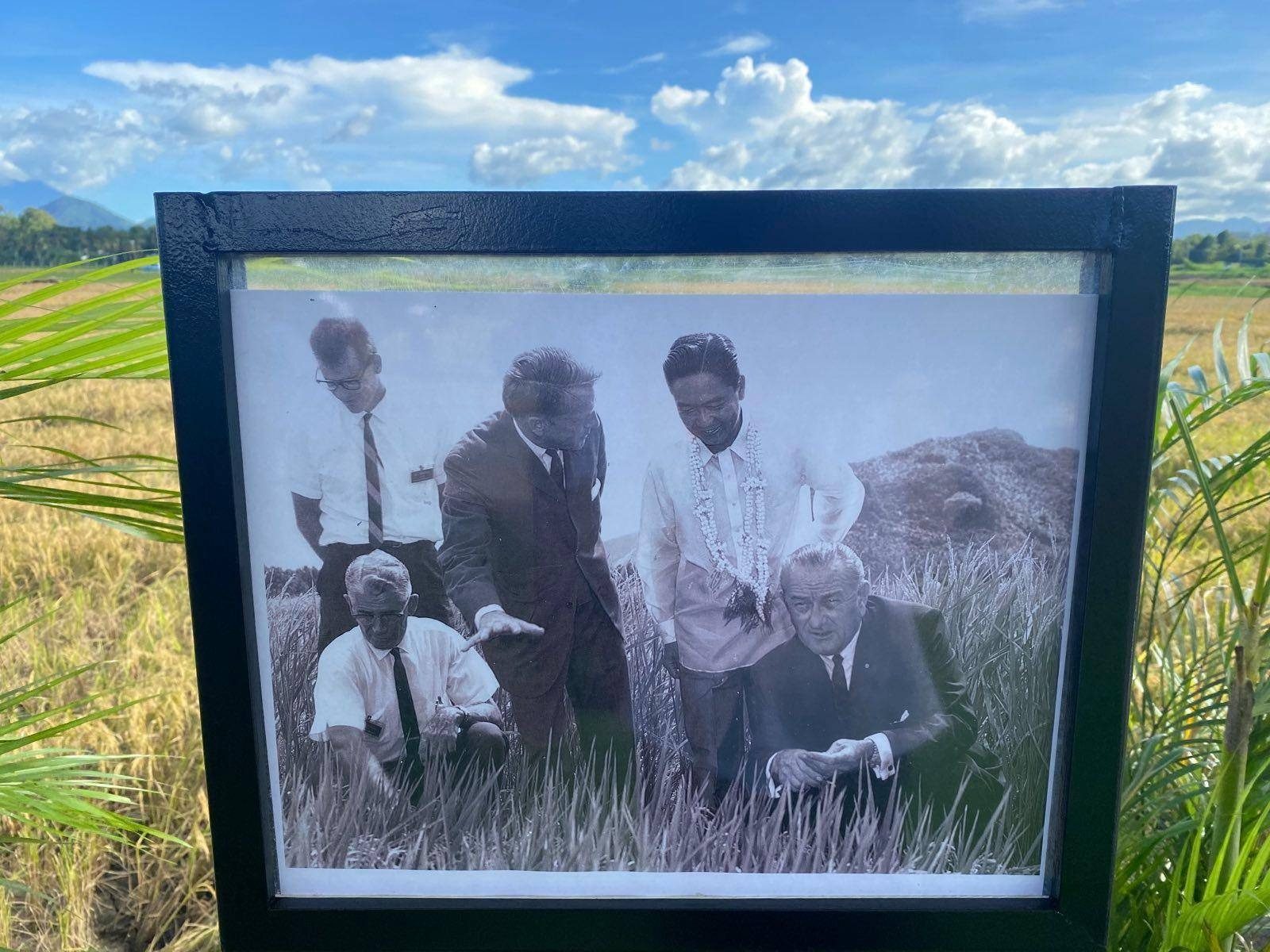
Masagana 99 was a program intended to help rice farmers increase their yield – founded through credit programs in rural banks. The package included high-yielding rice seeds, low-cost pesticides, herbicides, and fertilizer. The goal then was to produce 99 cavans of rice for every hectare of land planted with rice, a target that would address the rice production shortage in 1973.
The program was both a success and a failure. In 2020, personalities involved in its implementation noted that while it resolved the rice shortage in the years immediately following its launch, it proved unsustainable in financial and environmental terms – pesticides eventually harmed the environment, the credit system ended up problematic, and trained personnel ended up leaving.
“The low loan repayment, problematic implementation, and rising farmer debt led to the program becoming inconsequential by 1980, until it quietly stopped in 1984,” noted experts in the 2020 panel.
Marcos announced in July 2022, or the month he assumed office, that government would launch a “Masagana 150” or “Masagana 200.” Details of the plan, however, have yet to be made public. The agriculture department, which Marcos also heads, earlier said the program would be launched by October 2022. – Rappler.com
Add a comment
How does this make you feel?



![[Just Saying] SONA 2024: Some disturbing points](https://www.rappler.com/tachyon/2024/07/TL-marcos-sona-points-july-23-2024.jpg?resize=257%2C257&crop=335px%2C0px%2C720px%2C720px)

There are no comments yet. Add your comment to start the conversation.